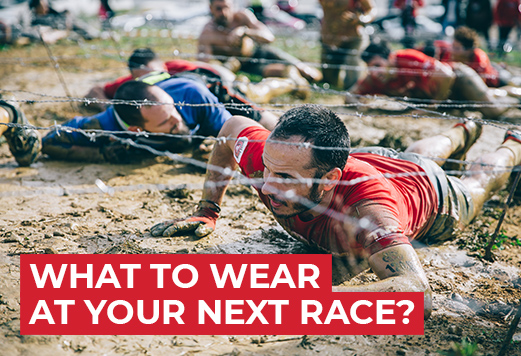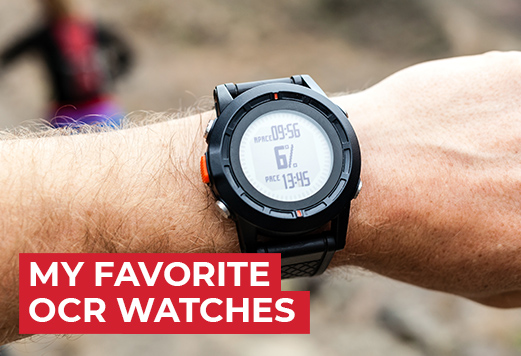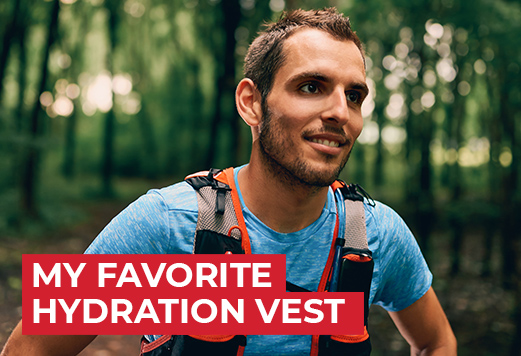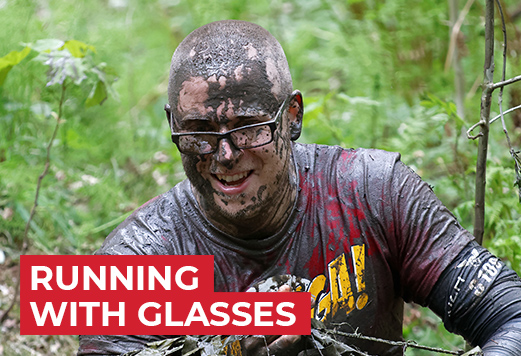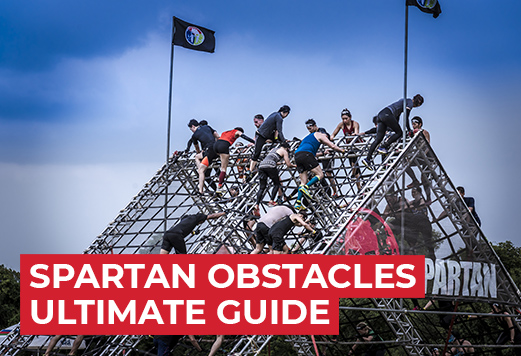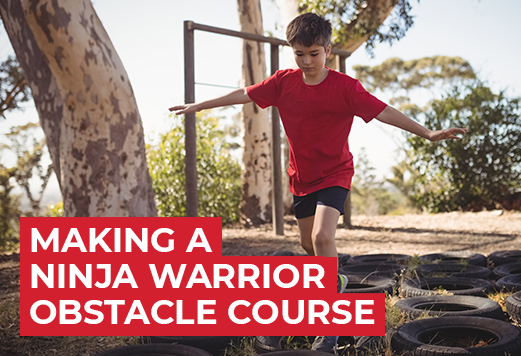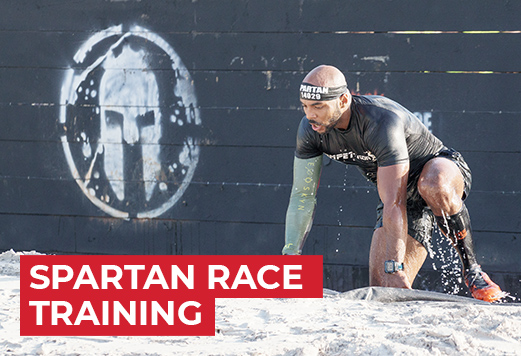Are Hydration Packs Good for Running?
During a run, especially an obstacle race, water is not always available, but It's vital to stay hydrated. Here's what must runners carry.
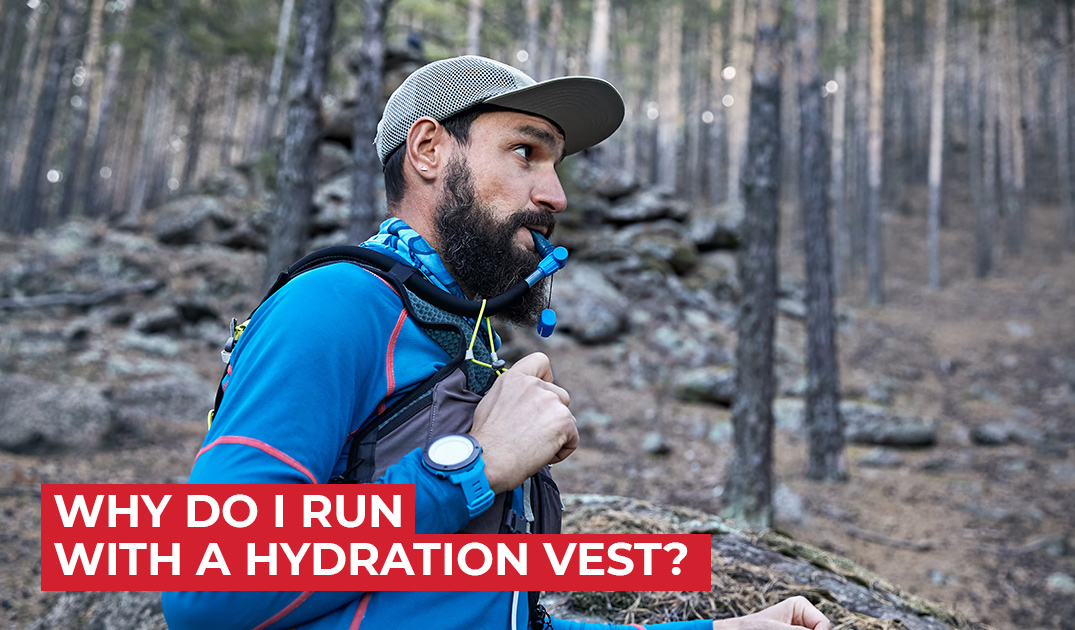

Staying hydrated is critical while running, and a hydration pack is an ideal solution. More than just a backpack, this hydration system is worn like a vest, and it has all the storage you need. However, I don't bring my hydration vest in every run.
If you're searching for the best hydration pack for running and expecting to find a real review from a real runner. Check out this list I created of the top hydration pack.
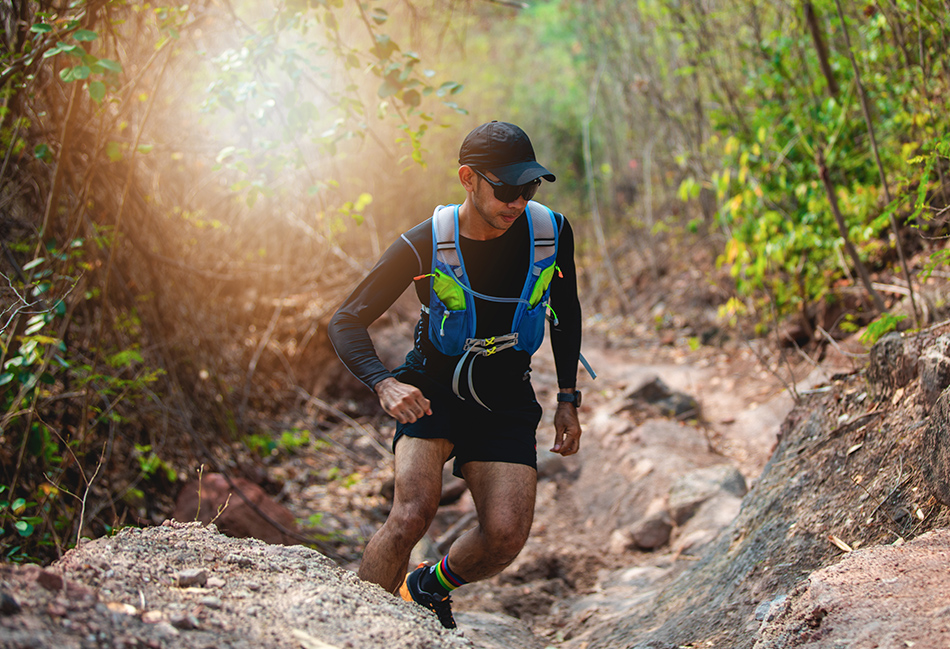
What is a hydration pack used for?
Here are the 3 reasons why runners prefer to wear a hydration pack during a race.
1. Staying hydrated
The purpose of running with a hydration pack is to avoid dehydration. The risk of being dehydrated is critical during physical activities, such as running.
Hydration greatly influence your performance. Drinking water is good for replacing the lost water through sweat and ensures your core temperature stays cool. Also, it helps to keep a study blood flow to your muscles and organs.
Being dehydrated while running can have severe consequences. In every event I've attended, obstacle racing or marathon running, participants had dropped out of the race because of dehydration. Some even had been sent to the hospital.
The dehydration symptoms include fatigue, cramps, dry eyes, headache, and muscle spasms. The ultimate manifestation is when you stop sweating. At that point, you'll need more than a glass of water.
Therefore, drinking water is vital, especially when running.
Should you carry water while running?
A good rule of thumb is to drink 8 oz every 20 minutes while running. On the other hand, if you run less than 30 minutes, you can do it without water.
The real question is, would you have access to water every 20 minutes?
Maybe you are running in the local park or in a location where you have access to drinking fountains. Also, most running events will have water stations along the course. If it's the case, you don't need to carry water.
However, the most accessible water is the one you bring with you. When carrying water, you don't have to stop for it, and you can just sip it during the run.
I prefer to be self-sufficient. I don't like to stop or slow down during a run, and I hate throwing away a plastic cup after one usage. Moreover, it comforts me to have access to water at any time I feel thirsty.
Finally, if you are running in hot weather, you should always bring water. It's just safer.
How much water a hydration pack hold?
Various options of reservoir capacity are available, and they vary from 32 to 100 ounces (1-3 liters). When choosing, always consider the extra weight of the liquid, which is around 2 lbs per liter.
I would suggest the 2 liters size because it's a fair balance between water capacity and weight to carry.
How long will my hydration pack last?
You can calculate the amount of liquid needed if you compared your running pace to my previous suggestion (drinking 8 oz of water every 20 min).
For example, if you are running 6.2 miles (10 km) at 9 minutes per mile, you can expect to finish the race under 60 minutes. This means you'll need around 24 ounces of water. Therefore the 1-liter bladder is sufficient.
However, if you are planning to run a Spartan Beast (13 miles) or half-marathon, you'll need the 2 liters reservoir.
- 1-liter reservoir = 1h20
- 2 liters reservoir = 2h40
- 3 liters reservoir = 4h00
The only situation I would bring the 3 liters hydration pack, is for a long run in a remote area with no access to clean water.
Sports drinks
Water is excellent for the body, and we should drink it as much as possible. However, during intense physical activities, sports drinks are more efficient to stay hydrated than pure water.
Sweat is constituted mostly from water and salt, and drinking water will only replace one of those elements. This is where sports drinks are more effective at maintaining the right balance because they contain the needed electrolytes (minerals).
In my opinion, one of the main advantages of carrying a hydration backpack is to load it with a sports drink.
2. Not relying on water stations
Every running event have water stations along the course. The set up is always the same; a large table filled with plastic cups and a line up of volunteers, handing cups of water (and sometimes sports drinks) to the runners.
You can choose to grab the cup while running or stop at the station. I found neither option to be optimal.
First, water stations are often overcrowded and disorganized. You are never a 100% sure if you grab the water or the Gatorade cup. Also, stopping or slowing down to take a cup of water is almost inevitable, which tend to break your running rhythm. If you decide to continue running while drinking your water (or Gatorade) you're a 100% sure to spill it all over your outfit.
Secondly, the real problem has occurred during many obstacle races. There's no more water! Maybe because of the location (rugged terrain, trails, and/or mountains), some water stations are difficult to restock. Also, it could be the inexperienced volunteers who forget to ask for more water before it's too late.
Finally, chances are you'll need water in between stations. Sometimes they are too far apart, and you become even more dehydrated before reaching the next water station.
For all those reasons I don't like to rely on water stations, especially during an obstacle race.
Are there water stations in a Spartan Race?
During a Spartan Race, you'll find at least one water station on the course and one at the finish line. For the longer race, such as the Sprint or the Beast, they'll have more water stations on the course (up to 4).
Spartan Race is one of the most well organize obstacle race; however, they also recommend to bring your water and be self-sufficient on the course. The event will be hard enough, you don't need the extra challenge of seeking for water while been dehydrated.
3. Extra storage
The other significant advantage of wearing a hydration vest is the storage capacity. It's convenient, accessible, and comfortable, as opposed to running with bulky short pockets.
Did you ever try to run with stuff in your pockets? It's so distracting, and after 1 or 2 miles, the only thing on your mind is; why did I bring all this stuff?
Even more problematic: you start the race with a jacket, but it becomes too hot, and you don't know what to do. So you tie it around your waist?!?
The storage capacity in the hydration pack solves it all. You can put your race fuel (energy gels and protein bars), your ID, your cash, and your car key in the back pockets. Plus, you can use the extra space to put your jacket or cap.
For an obstacle race, such as the Spartan Super or Beast, I also bring a couple of bandages, extra contact lenses and salt tablets for cramps.
Don't want your stuff to get wet because of the water obstacles? Simply, put everything in a ziplock bag.
Even if there is a water station along the course, I prefer to bring my hydration vest for the storage.

When using a hydration pack?
Even if a hydration pack is beneficial through a race, I don't wear it to every event. Here is my advice on when and where it's useful.
5k race
Spartan Sprint, Spartan Stadium, Tough Mudder 5k, Rugged Maniac, Warrior Dash, Mud Run, Zombie Run, Fun run, etc.
I don't bring my hydration vest for a run under 3 miles (5km). I use to take it everywhere, but now I can finish those run fast enough that I don't need water during the race. I simply make sure to drink enough water before and after the race.
If you are participating in a mud run or an obstacle race, with lots of muddy obstacles, it's preferable not to bring a hydration pack. First, the drinking straw will be covered with dirty mud (hello infection). Secondly, the bag will become saturated with water and dirt, creating extra weight to carry on your back.
However, if I'm running a Spartan Sprint during a hot summer day, I still bring the hydration pack.
10k race
Spartan Super, Tough Mudder Classic
For a 10k (6 miles) race on a flat road, I'm leaving my hydration pack at home.
On the other hand, during a 10k obstacle race, I would bring my hydration pack because I'm not fast enough to reach the finish line without drinking water or taking an energy gel.
21k race
Half marathon, Spartan Beast
I have worn my hydration vest to every half-marathon, and I will continue. Plenty of runners are ok without one, but I prefer to carry my own water (with electrolytes) and not relying on the water stations.
You should bring a hydration vest during a Spartan Beast because you'll need every help you can have to get that green medal. This means; filling the tank with electrolytes, bringing enough race fuel and food.
For more details on why you need a hydration pack for Spartan Beast, check out this article I wrote on how to prepare for a Spartan Beast!
42k race and more
Spartan ultra, marathon
Running a full marathon is on my to-do list, so I can't talk about my experience. However, when I do it, you bet I'll bring my hydration vest. I don't want to drop out of the race because of dehydration. I want to make sure I get to the finish line.
For a Spartan Ultra, you'll need a hydration pack and all the race fuel it can contain. This race is demanding, and you must be prepared to run on the course for over 10 hours.

Is there any drawback to hydration pack?
A hydration pack is not a magical wand, and of course, it comes with concerns. Over time, I have heard them all, but here are the most significant concerns.
The primary issue is the additional weight to carry along the race. The hydration pack weight less than 1 pound, and each liter of liquid is approximately 1 pound. Therefore, for a 2 litter hydration vest, you can expect to add an extra 3 pounds on your back. Plus, even if the hydration pack is made of breathable fabric, you tend to sweat more than usual when wearing it.
During an obstacle race, you'll need to carry this extra weight through the obstacles. Also, to avoid damage, you'll take off your hydration pack for specific obstacles, such as the Barbed Wire Crawl.
For some runners, this additional weight is not worth it because it translates into more time on the course. This is why you'll never see top athletes running with a hydration vest (expect in ultra-marathon).
It all comes down to your preferences and objectives.
I want to enjoy every minute of the race, and I don't care about the time, because I'm not competing for the podium. I'm fighting to finish the race.
My hydration vest has kept me hydrated and cramp-free during so many races that I wouldn't consider running without one. In my opinion, the extra 3 pounds is a good trade-off.

What are the alternatives?
A hydration pack is not the only solution to stay hydrated or to carry stuff during a race. Here are the 4 alternatives you should also consider.
1. Hydration belt
Probably the most popular hydration system among runners, the hydration belt has been around for a long time. The belt is made of comfortable fabric, with extra pockets (large enough for your iPhone), and with 2-3 removable water bottles.
It works great for short distance, but when you start going for longer runs (6mile/10km or more) it become uncomfortable. It put extra weight on your hips, and the friction becomes inconvenient.
Moreover, in every race, I will see lost bottles on the ground. A hydration belt without bottles is useless.
2. Water bottle
Here I'm not talking about running with a single plastic bottle in your hand, because that's just an enormous burden. I can't believe people are doing it, must be so annoying.
Many marathons and ultra-marathon runners are running with a special water bottle in their hand. The water bottle has a handle to secure the container to the runner's palm.
The problem is during an obstacle race; your hands must be available to climb over the obstacles. Also, if you are running in a rugged trail and you trip over a rock, you'll need your hands for the landing.
3. Run without water
You could also run without water, but it's a gamble I'm not willing to take during an obstacle race, especially when Spartan Race recommend bringing your own water supply for the race.
4. Waist pack
Ok, you decide to run without water, but you still appreciate a place to store your race fuel or other valuable stuff (car key, cash, etc.). This is where a waist pack could be useful.
The waist pack is the only "extra" gear I've seen top athletes wearing at a Spartan Race. It's much smaller and lightweight than the hydration belt. Therefore, it could be a good option if you don't need the water, but only the extra pocket.

What hydration pack do I use?
I have tested various hydration systems, including the hydration belt, and here's what I been using in the past year.
I wish my budget allowed me to buy the Salomon hydration vest, but I've found a similar alternative, for a fraction of the price.
It has all the front pockets that I need to stock my race fuel, plus a special zipper pocket in the back. The wide shoulder straps and the breathable fabric, make this vest extra comfortable. It's like not wearing one at all!

So, is it worth it to have a hydration vest?
From my experience, a hydration vest is a must for the long runs and obstacle races. I also ask many of my fellow runners, and everyone agrees that it's preferable to have a hydration vest, especially when you are a beginner or getting into the longer races (ex: Spartan Beast).
Having a hydration system will prevent dehydration and premeditated muscle fatigue. Also, replace the water with sports drinks, and you are sure to maintain the right balance of water and electrolytes in your body.
The storage capacity is definitely a significant advantage, especially for the long run. Having your race fuel accessible when you need it, can make all the difference.
A good hydration vest is more comfortable than a hydration belt. The design and the fabric make it almost invisible.
Last but not least, an good hydration vest is still affordable. In my opinion, you shouldn't skip this vital piece of equipment.
P.S. If you're searching for the best hydration vest for runner and hoping to get genuine advice from a real runner. You should check out this list I created of the top hydration backpack.
I have picked these hydration system because I'd used them in different obstacle races and mud runs. Plus, I'd confirmed my selection with my fellow OCR runners. With all their insights and my own experience, I've built this list of the top hydration vest and backpack.

Thank you for reading!
Hi, I'm the Obstacle Ninja, and I will share with you my tips on how to crush it at your next obstacle racing. Also, how to get your little ninja more active with obstacle course. Want to know more about me? Read my story!

Hi, I'm the Obstacle Ninja, and my passion is OCR (obstacle course running).
My idea of the perfect weekend is to run a Spartan Race or Tough Mudder with my family. We love to run in the mud and challenge your self with the obstacle. My kids and I, we love to watch Ninja warrior and train for our next obstacle race or mud run.
I will share with you my tips on how to crush it at your next obstacle racing. Also, how to get your little ninja more active with obstacle course.
Want to know more about me?
Read my story!
Got questions? Contact me!
